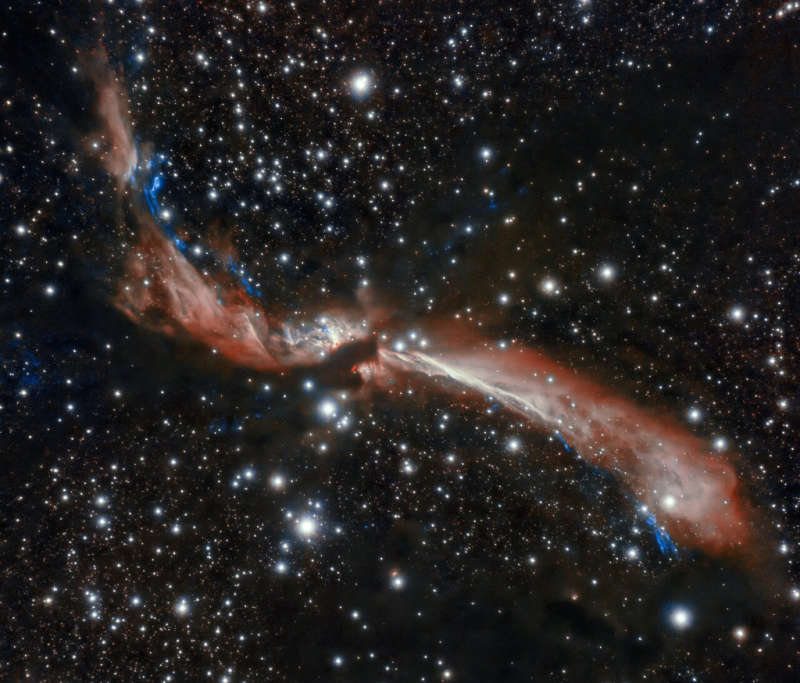
|
Credit & Copyright: International Gemini Observatory /
NOIRLab /
NSF /
AURA
Acknowledgments: L. Ferrero (Universidad Nacional de C÷Ęrdoba)
Explanation:
Laser
guide stars and
adaptive optics sharpened this stunning
ground-based image of stellar jets from the
Gemini South Observatory,
Chilean Andes, planet Earth.
These
twin outflows of MHO 2147
are from a young star
in formation.
It lies toward the central Milky Way and the
boundary of the constellations Sagittarius and Ophiuchus at
an estimated distance of some 10,000 light-years.
At center, the star itself is obscured by a dense region of cold dust.
But the infrared image still traces the sinuous jets across a
frame that would span about 5 light-years at the system's estimated distance.
Driven outward
by the young rotating star,
the apparent wandering direction of the jets is likely due to precession.
Part of a multiple star system, the young star's rotational axis
would slowly precess or wobble like a top under the gravitation influence
of its nearby companions.
Acknowledgments: L. Ferrero (Universidad Nacional de C÷Ęrdoba)
|
January February March April May June July August September October November December |
| |||||||||||||||||||||||||||||||||||||||||||||||||||||||
NASA Web Site Statements, Warnings, and Disclaimers
NASA Official: Jay Norris. Specific rights apply.
A service of: LHEA at NASA / GSFC
& Michigan Tech. U.
Based on Astronomy Picture
Of the Day
Publications with keywords: jet - young stars
Publications with words: jet - young stars
See also:
- APOD: 2025 April 9 ┴ HH 49: Interstellar Jet from Webb
- APOD: 2024 October 1 ┴ Porphyrion: The Longest Known Black Hole Jets
- The Galaxy, the Jet, and a Famous Black Hole
- APOD: 2024 May 7 ┴ Black Hole Accreting with Jet
- APOD: 2023 September 19 ┴ HH 211: Jets from a Forming Star
- Stars, Dust, Pillars, and Jets in the Pelican Nebula
- HD 163296: Jet from a Star in Formation
